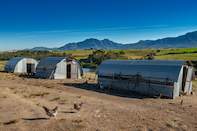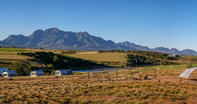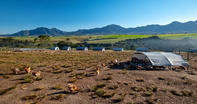Before starting a poultry operation, consider the municipal by-laws on animal production in your region. These by-laws differ from one municipality to another and regulates the number of birds and conditions under which birds may be kept.

There would, for example, be regulations concerning the distance birds should be kept from property lines, houses and streets and the way in which waste and sick animals should be treated. Merely having access to farmland does not automatically allow you to produce poultry.
If there has never been a commercial poultry operation on the farm, an environmental impact study might be needed to assess how production would affect the environment.
There might also be certain rules that should be adhered to, for example, production facilities should be a certain distance from fruit pack houses and pig farms.
Physical Requirements

The housing can take the form of a permanent or mobile structure. Flock health and welfare should be the primary focus when designing or building a structure. Ideally, it should keep predators out, protect birds against the elements, add to bird comfort, be easy to clean and ease production management.
It should also be neat-looking and well-kept to avoid conflict with neighbours. Careful planning and design is needed when setting up a permanent structure to take advantage of natural environmental conditions.
For an even distribution of heat, for example, it might make sense to construct the building so the longer sides face north and south, while the shorter sides face east and west. The building should also preferably be built on a slope to avoid drainage problems.
For both mobile and permanent structures, it is important to ensure adequate ventilation. In naturally ventilated structures, which are significantly cheaper than closed systems, there should be windows with curtains that can open and close to help manage temperatures within the structure. The windows can be covered with mesh to keep wild birds out that may be carrying diseases.
Size Matters

The size of the house should also be considered. Not using space optimally will chase up production costs, so it is better to start small and build additional houses as production increases.
According to the South African Poultry Association’s abridged code of practice, layers older than eighteen weeks in a cage system should each have access to at least 450 cm² of space, whereas no more than 10 layers are allowed per square meter in a free range layer or barn system.
With broiler production, the bird density is not allowed to exceed 40 kg per square meter in a floor system, while birds older than 4 weeks in a cage system should have access to at least 450 cm per bird. A stocking density of no more than 15 adult broilers per square meter is allowed in a free range or barn system.
The height of cages and housing structures should allow free head movement of standing chicken. With mobile systems it is important to move the structures to prevent overgrazing and give grazed areas enough time to recover before the structure is returned to the same spot.
By Glenneis Kriel